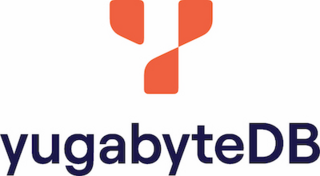Related Research Articles

MySQL is an open-source relational database management system (RDBMS). Its name is a combination of "My", the name of co-founder Michael Widenius's daughter My, and "SQL", the acronym for Structured Query Language. A relational database organizes data into one or more data tables in which data may be related to each other; these relations help structure the data. SQL is a language that programmers use to create, modify and extract data from the relational database, as well as control user access to the database. In addition to relational databases and SQL, an RDBMS like MySQL works with an operating system to implement a relational database in a computer's storage system, manages users, allows for network access and facilitates testing database integrity and creation of backups.

PostgreSQL, also known as Postgres, is a free and open-source relational database management system (RDBMS) emphasizing extensibility and SQL compliance. PostgreSQL features transactions with atomicity, consistency, isolation, durability (ACID) properties, automatically updatable views, materialized views, triggers, foreign keys, and stored procedures. It is supported on all major operating systems, including Linux, FreeBSD, OpenBSD, macOS, and Windows, and handles a range of workloads from single machines to data warehouses or web services with many concurrent users.

Ingres Database is a proprietary SQL relational database management system intended to support large commercial and government applications.
The following tables compare general and technical information for a number of relational database management systems. Please see the individual products' articles for further information. Unless otherwise specified in footnotes, comparisons are based on the stable versions without any add-ons, extensions or external programs.
In computing, a solution stack or software stack is a set of software subsystems or components needed to create a complete platform such that no additional software is needed to support applications. Applications are said to "run on" or "run on top of" the resulting platform.
Multi-master replication is a method of database replication which allows data to be stored by a group of computers, and updated by any member of the group. All members are responsive to client data queries. The multi-master replication system is responsible for propagating the data modifications made by each member to the rest of the group and resolving any conflicts that might arise between concurrent changes made by different members.

LAMP is an acronym denoting one of the most common software stacks for the web's most popular applications. Its generic software stack model has largely interchangeable components.

H2 is a relational database management system written in Java. It can be embedded in Java applications or run in client-server mode.
A spatial database is a general-purpose database that has been enhanced to include spatial data that represents objects defined in a geometric space, along with tools for querying and analyzing such data.

Michael Ralph Stonebraker is a computer scientist specializing in database systems. Through a series of academic prototypes and commercial startups, Stonebraker's research and products are central to many relational databases. He is also the founder of many database companies, including Ingres Corporation, Illustra, Paradigm4, StreamBase Systems, Tamr, Vertica and VoltDB, and served as chief technical officer of Informix. For his contributions to database research, Stonebraker received the 2014 Turing Award, often described as "the Nobel Prize for computing."
NoSQL is an approach to database design that focuses on providing a mechanism for storage and retrieval of data that is modeled in means other than the tabular relations used in relational databases. Instead of the typical tabular structure of a relational database, NoSQL databases house data within one data structure. Since this non-relational database design does not require a schema, it offers rapid scalability to manage large and typically unstructured data sets. NoSQL systems are also sometimes called "Not only SQL" to emphasize that they may support SQL-like query languages or sit alongside SQL databases in polyglot-persistent architectures.
Amazon Relational Database Service is a distributed relational database service by Amazon Web Services (AWS). It is a web service running "in the cloud" designed to simplify the setup, operation, and scaling of a relational database for use in applications. Administration processes like patching the database software, backing up databases and enabling point-in-time recovery are managed automatically. Scaling storage and compute resources can be performed by a single API call to the AWS control plane on-demand. AWS does not offer an SSH connection to the underlying virtual machine as part of the managed service.
A cloud database is a database that typically runs on a cloud computing platform and access to the database is provided as-a-service. There are two common deployment models: users can run databases on the cloud independently, using a virtual machine image, or they can purchase access to a database service, maintained by a cloud database provider. Of the databases available on the cloud, some are SQL-based and some use a NoSQL data model.
The following outline is provided as an overview of and topical guide to MySQL:

InfluxDB is an open-source time series database (TSDB) developed by the company InfluxData. It is used for storage and retrieval of time series data in fields such as operations monitoring, application metrics, Internet of Things sensor data, and real-time analytics. It also has support for processing data from Graphite.

DBeaver is a SQL client software application and a database administration tool. For relational databases it uses the JDBC application programming interface (API) to interact with databases via a JDBC driver. For other databases (NoSQL) it uses proprietary database drivers. It provides an editor that supports code completion and syntax highlighting. It provides a plug-in architecture that allows users to modify much of the application's behavior to provide database-specific functionality or features that are database-independent. This is a desktop application written in Java and based on Eclipse platform.

Postgres-XL is a distributed relational database management system (RDBMS) software based on PostgreSQL. It aims to provide feature parity with PostgreSQL while distributing the workload over a cluster. The name "Postgres-XL" stands for "eXtensible Lattice".

Grafana is a multi-platform open source analytics and interactive visualization web application. It can produce charts, graphs, and alerts for the web when connected to supported data sources.
Amazon DocumentDB is a managed proprietary NoSQL database service that supports document data structures, with some compatibility with MongoDB version 3.6 and version 4.0. As a document database, Amazon DocumentDB can store, query, and index JSON data. It is available on Amazon Web Services. As of March 2023, AWS introduced some compliance with MongoDB 5.0 but lacks time series collection support.

YugabyteDB is a high-performance transactional distributed SQL database for cloud-native applications, developed by Yugabyte.
References
- ↑ Miller, Ron (5 May 2021). "Timescale grabs $40M Series B as it goes all in on cloud version of time series database". techcrunch.com.
- ↑ "TimescaleDB v2.15.0 release notes" . Retrieved 10 May 2024.
- ↑ Design Recommendations for Intelligent Tutoring Systems: Volume 8 - Data Visualization. Army Research Laboratory. December 29, 2020. p. 50. ISBN 9780997725780.
For example, the emergence of reliable, open-source, timeseries databases, such as InfluxDB and TimescaleDB, have made them indispensable tools upon which to build metric-driven workflows (Assay, 2019).The value in these specialized data-stores is in their singluar focus around ingesting and vending massive amounts of tagged measurements at specific points in time. The optimization and specificity to common issues related to measurement in general --- as well as their open-source licenses --- have made them indispensable solutions for a wide range of needs requiring measurement at scale.
- ↑ Dr. Quan Ha Le; Marcelo Diaz (13 August 2021). Developing Modern Database Applications with PostgreSQL. Packt Publishing. p. 162. ISBN 9781838641061.
TimescaleDB is an open source database for time series data; we first heard about TimescaleDB when we investigated standalone PostgREST because it had TimescaleDB as a built-in extension.
- ↑ Nathan Liefting; Brian van Baekel (26 February 2021). Zabbix 5 IT Infrastructure Monitoring Cookbook. Packt Publishing. p. 358. ISBN 9781800208452.
TimescaleDB is an open source relational PostgreSQL database for time-based series data.
- ↑ Baer, Tony (June 17, 2021). "Timescale scales out and sets its sights on analytics". zdnet.com.
Thus, TimescaleDB joins what is literally a crowd in the PostgreSQL community, but it is unique in being one of the few, if not the only, PostgreSQL variants that have been specifically designed for time series data.
- ↑ Grzesik, Piotr; Mrozek, Dariusz (2020-05-25). "Comparative Analysis of Time Series Databases in the Context of Edge Computing for Low Power Sensor Networks". Computational Science – ICCS 2020. Lecture Notes in Computer Science. Vol. 12141. pp. 371–383. doi:10.1007/978-3-030-50426-7_28. ISBN 978-3-030-50425-0. PMC 7302557 .
- ↑ Struckov, Alexey; Yufa, Semen; Visheratin, Alexander A.; Nasonov, Denis (2019-01-01). "Evaluation of modern tools and techniques for storing time-series data". Procedia Computer Science. 156: 19–28. doi: 10.1016/j.procs.2019.08.125 . ISSN 1877-0509.
- ↑ "High Volume Space Exploration Time-Series Data Storage in PostgreSQL". InfoQ. Retrieved 2021-08-04.
- ↑ Jowanza Joseph (December 6, 2021). Mastering Apache Pulsar (Ebook). O'Reilly Media. ISBN 9781492084853.
TimescaleDB shares some philosophical and performance characteristics with InfluxDB, a database supported out of the box by Pulsar IO.
- ↑ Martin, Steven J. (2018-09-01). "Cray Advanced Power Management Updates" (PDF). CUG Proceedings 2018. Retrieved 2021-08-04.
- ↑ Jinka, Preetam (2018-12-05). "Time Series at ShiftLeft". Medium. Retrieved 2021-08-04.
- ↑ "TimescaleDB License Agreement". 2020-09-24. Retrieved 2021-08-09.
- ↑ David G. Cohen; Brad Feld (July 2020). Do More Faster India. Wiley. ISBN 9781119698913.
Founded by Andrew Cheung and Ajay Kulkarni, Sensobi was a mobile address book that enabled users to record notes, set follow-up reminders, stay connected, and manage relationships. Sensobi received a small amount of funding and was acquired by GroupMe in 2011, when the app was relaunched as a mobile chat platform. Andrew is currently a technical lead at Signal Services and Ajay is cofounder and CEO of TimescaleDB.
- ↑ "A scalable time-series database that supports SQL". O'Reilly Data Show Podcast. 2017-06-22. Retrieved 2021-08-09.